
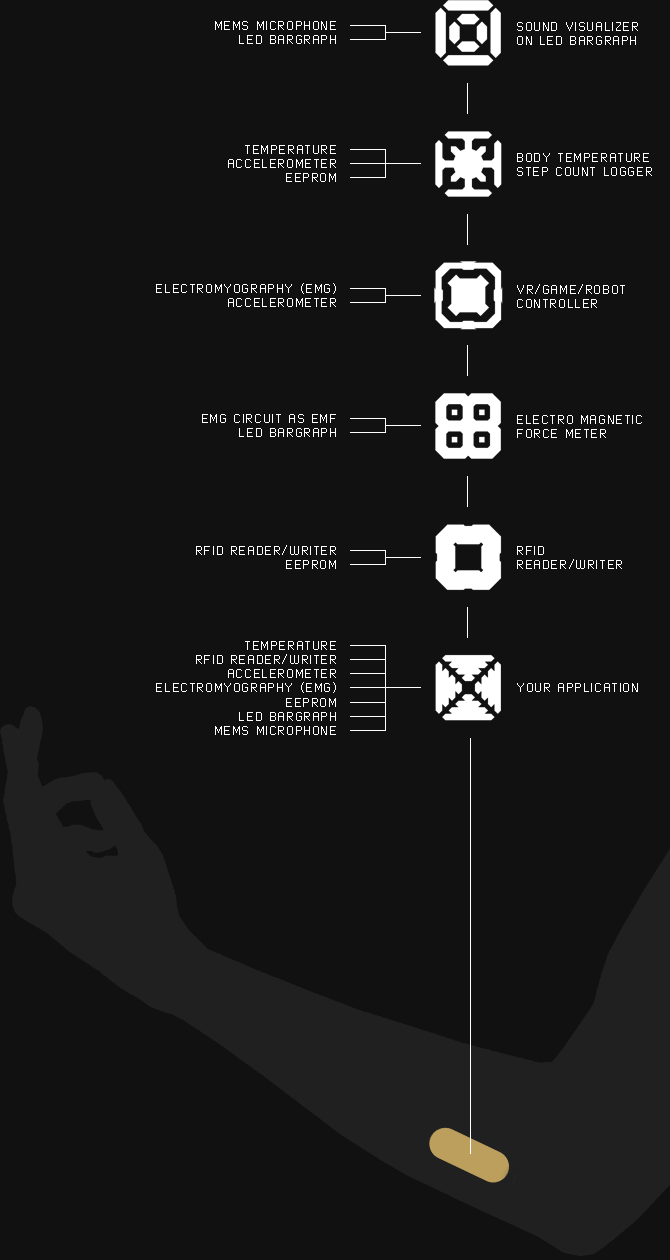
By having the system permanently embedded in your body, you have a different type of controlled environment which cannot be interfered with by the various day to day lives of people.
The electronic components within the system are small but require a 3D model to assist in keeping the system as small as possible. A draft of the 3D design can be see below.
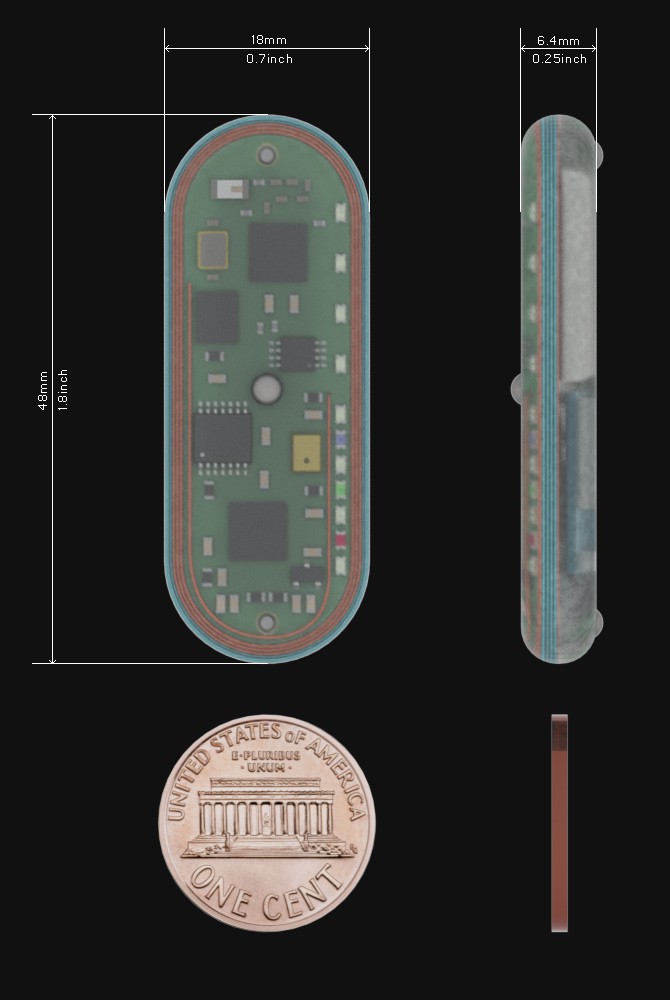


Electronic Components
INA333 + AD8692ARMZ + OPA364
Op-amps for Electromyography (EMG) muscle bioelectrical activity circuit (page 32,41). or sense electromagnetic fields.
MMA8451
14bit accelerometer has a built-in low and high-pass filter. Shake, Single, Double and Directional Tap Detection. Freefall and Motion Detection.
8 X 0603 bright white SMD leds
LED bar graph, allows menu for cyber tools and data visualization through skin.
SPU0410HR5H-PB
MEMS microphone for sound visualizer on LED bar graph (VU meters).
PN523
RFID & NFC reader/writer to allow arm-over access to data from other RFID/NFC applications.
24LC1025
Memory, stores RFID tags, data from the temperature & accelerometer.
HTU21D
High Precision Temperature Sensor, realtime monitor of your body's temperature.
ATMEGA328P
Atmel picoPower 8-bit AVR RISC-based microcontroller.
BlueGiga BLE113 with Cable Replacement firmware
Uploading Arduino code over the air (Bluetooth to serial converter).
NRF8001
Single-chip Bluetooth® low energy Connectivity IC.
301218HS20C
20mAh Super Safe Fullriver Lipo Battery.
BQ51013B
Coil charger for wireless charging capability.
LTC4065
LiPo Battery Charger.
MCP1700
Linear Voltage Regulator. 1.6 µA Quiescent Current.
DRV5013
Digital-Latch Hall Effect Sensor. For enabling/disabling Bluetooth To Serial converter.


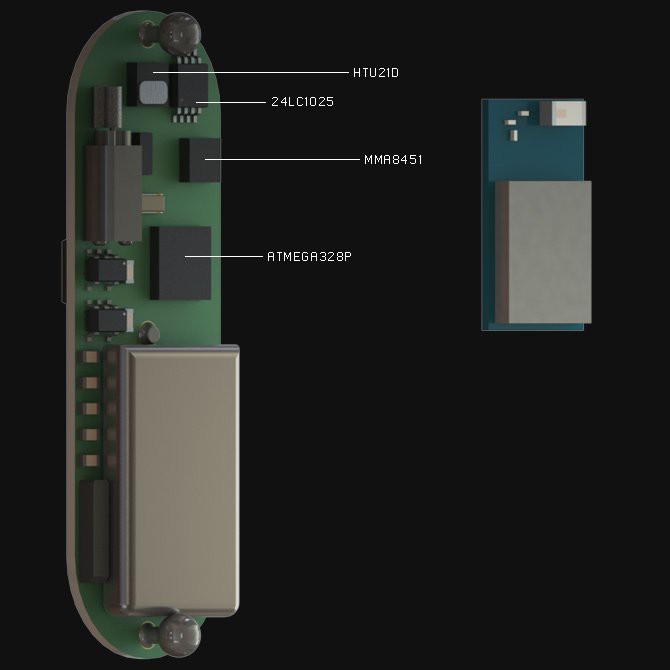
LED bar graph

RX/TX/Status LED

Safety and Materials
- Bionic Yourself (B10N1C) shell/enclosure will be made from a medical grade silicone
- 316L Stainless Steel EMG Terminals will be utilized by piercing Barbels MAKE-UB312-micro.
- Special super safe Lipo battery Fullriver (301218HS20C)
- Humidity sensor (HTU21D) for safety, if humidity level rises inside enclosure, that means it is time to remove the device.
Reference
- EMG circuit from BITalino project (page 32,41)
- Adafruit Arduino libraries and reference schematic for MMA8451, HTU21D, NRF8001.
Project Schedule
- Mechanical design, large electronic component arrangement [ DONE ]
- Breadboarding and making final decision on components [ DONE ]
- Design schematic and PCB in Eagle [ IN PROCESS ]
- Assemble and test without implanting
- Implant in arm at a licensed body modification studio
THP Semi-Finalist Video
Hackaday provides the best place to publish this project, because it is a project that hackers will appreciate. Part of the appeal in releasing this project on Hackaday is to open the doors to criticism and improvement. Let's build the smallest, safest, simplest, and most robust low-energy implant with uploading Arduino code over the air.
 txyz.info
txyz.info



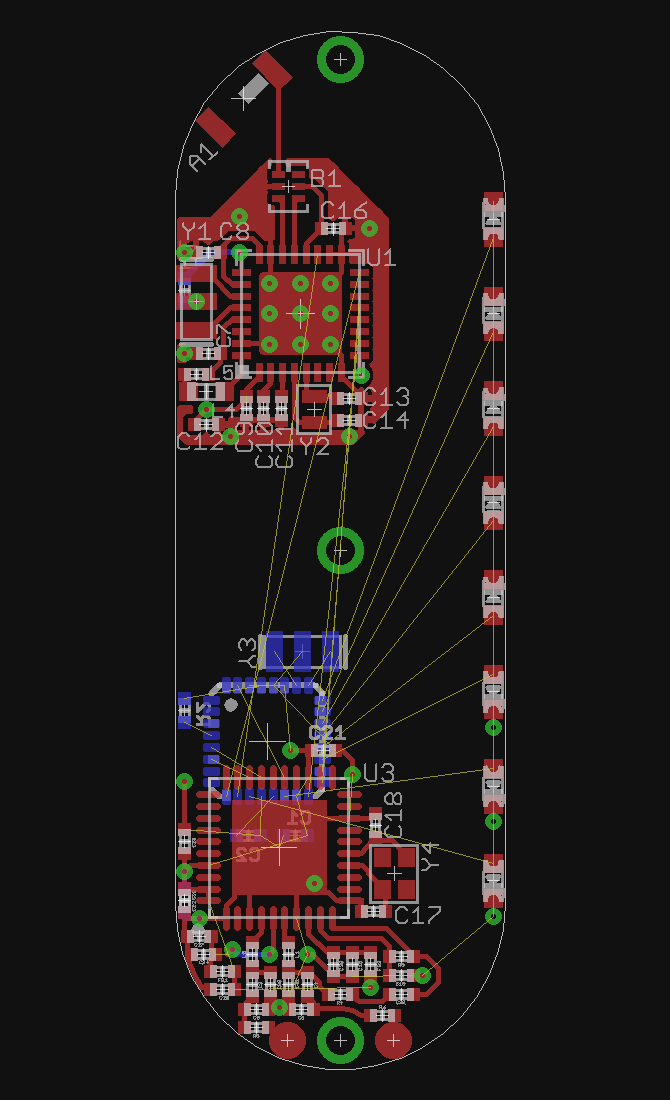



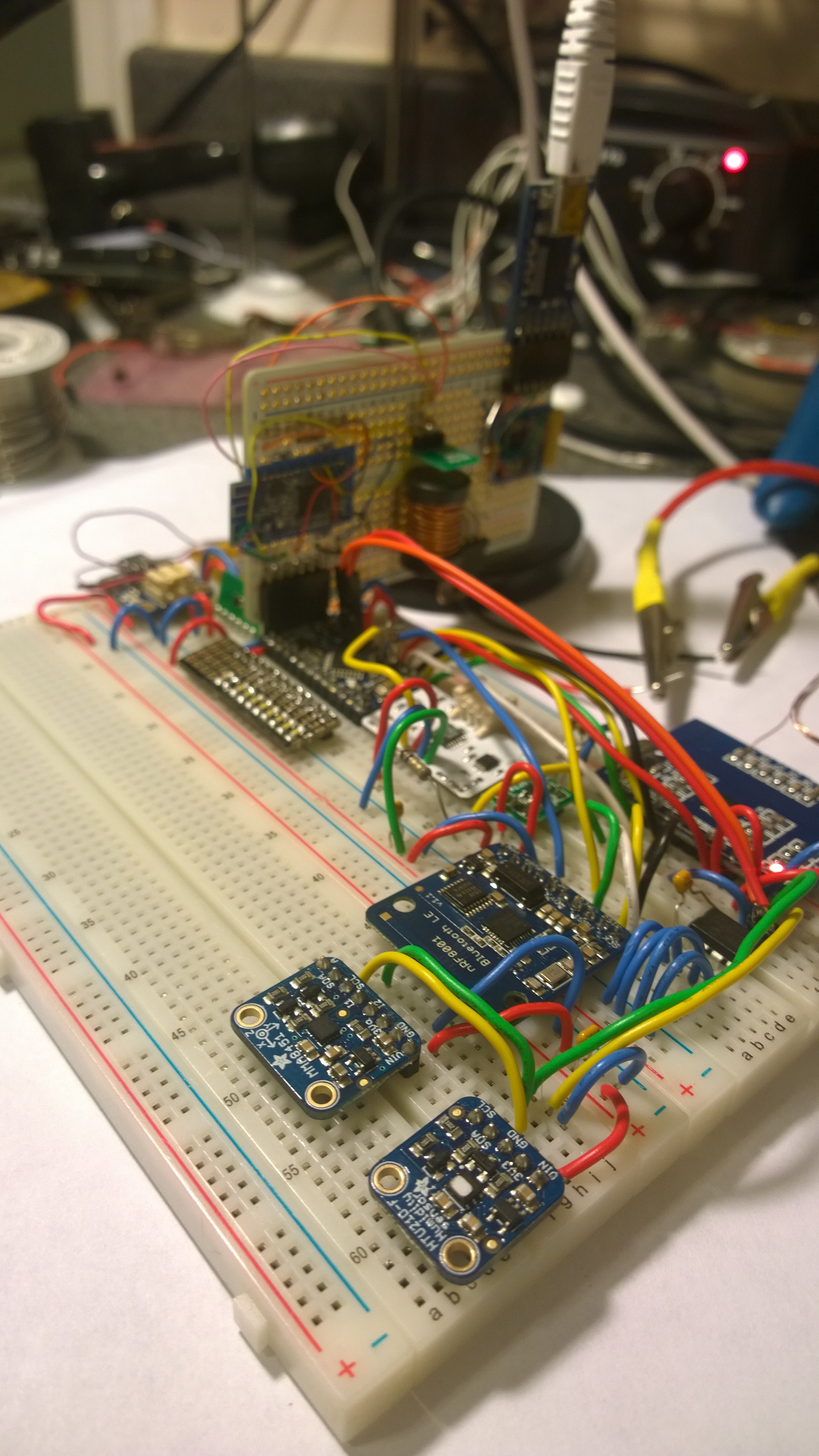

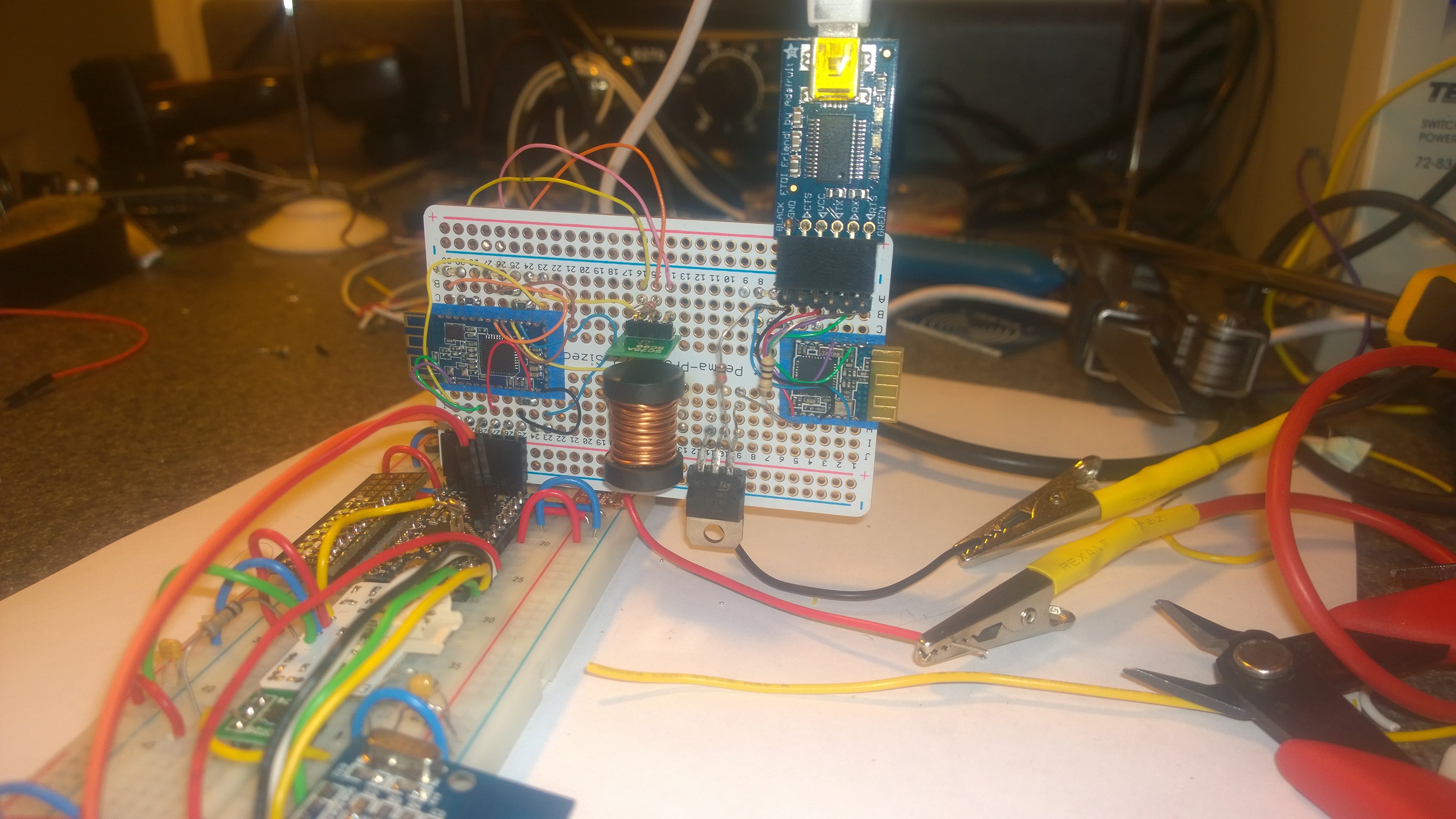

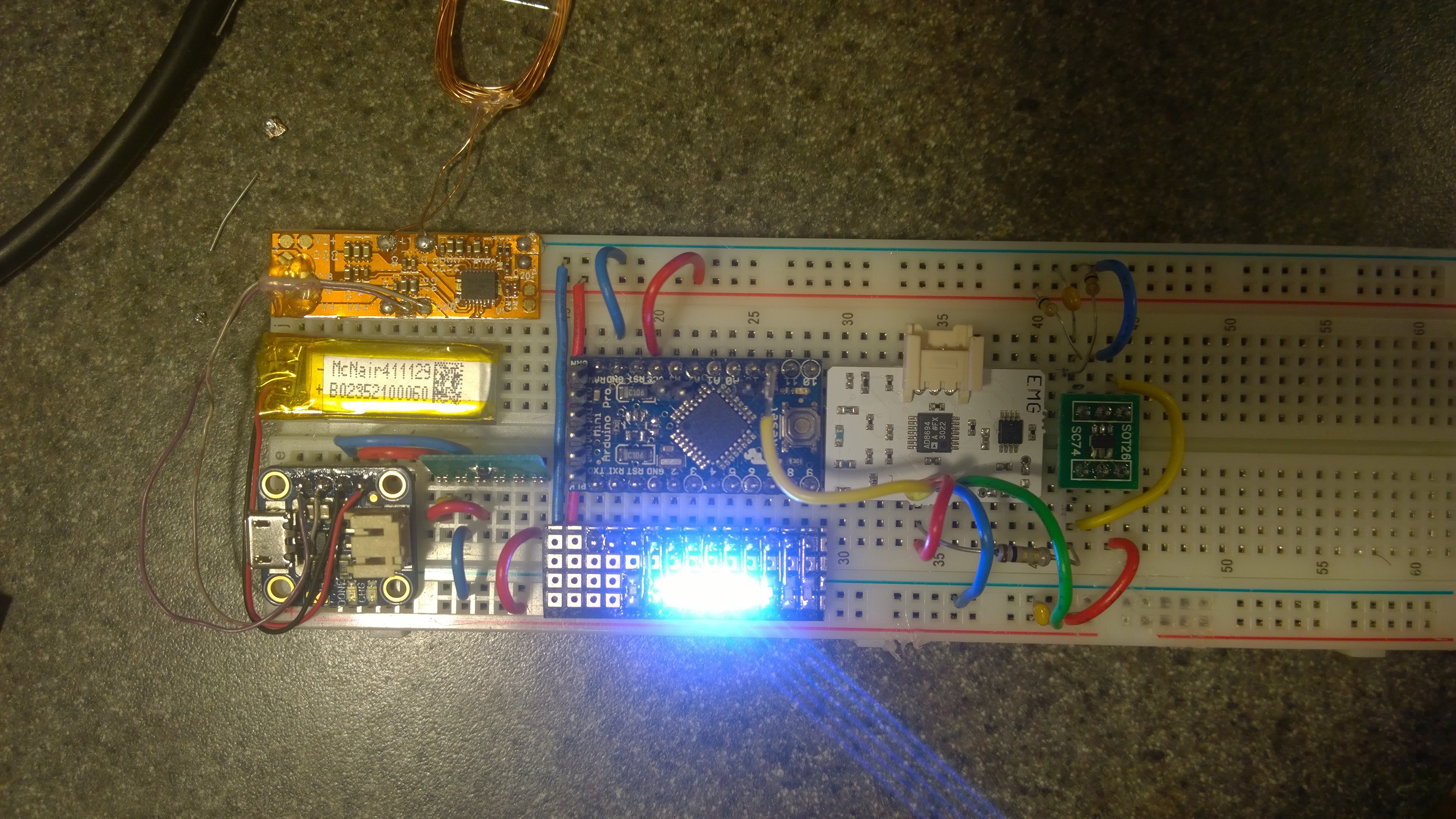
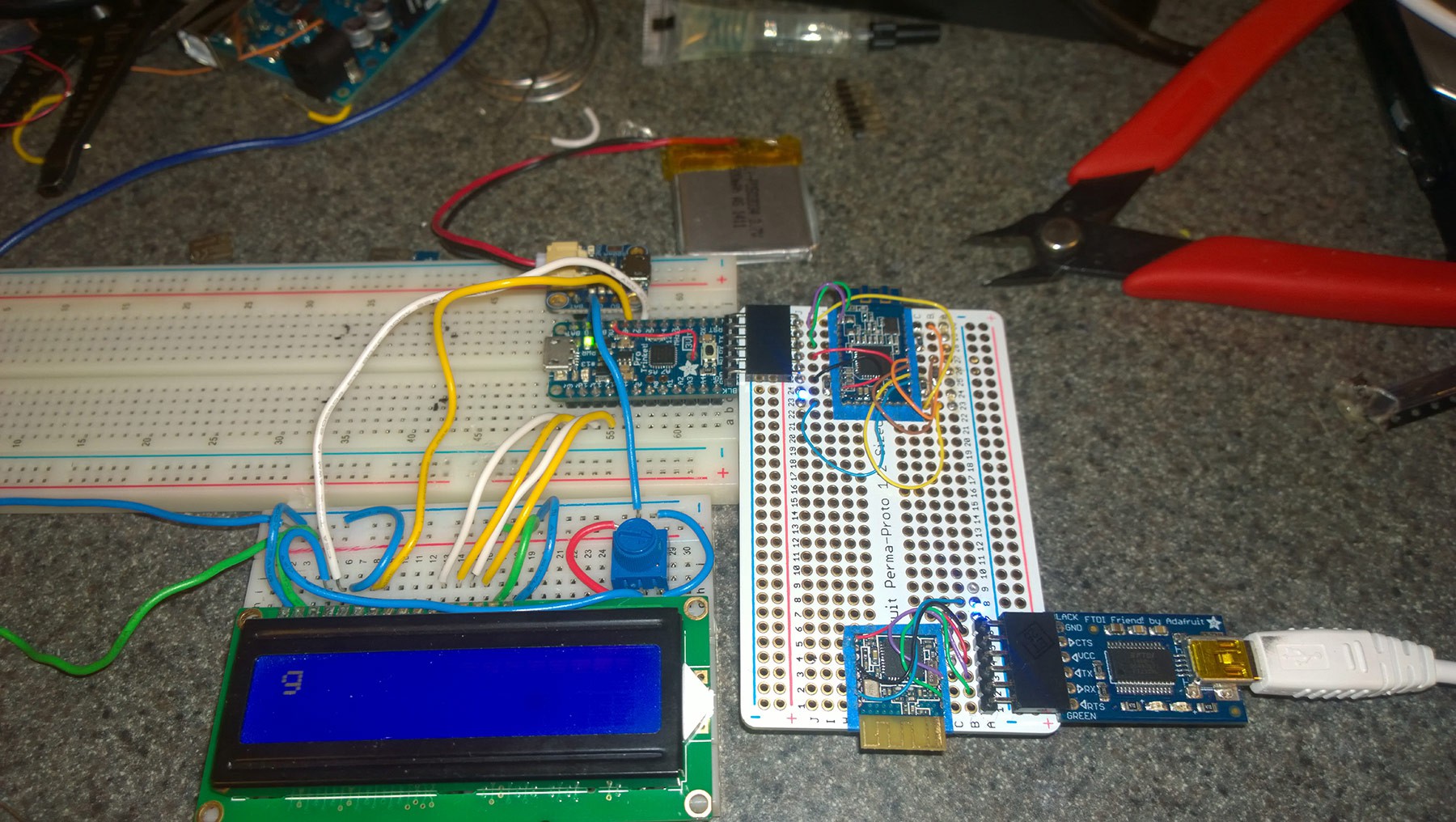





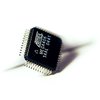















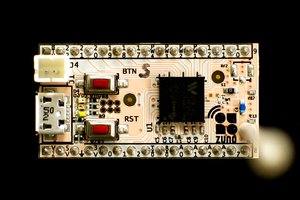
 Poltorak Serguei
Poltorak Serguei
 Lithium ION
Lithium ION
 ElectroBoy
ElectroBoy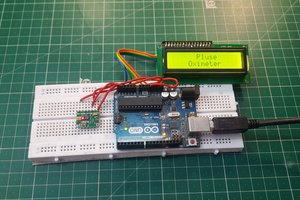
 Sagar 001
Sagar 001
i wish to be a tester for you i find your project to be very interesting and wish to see the functionality of it in action my email is djheckno@gmail.com writ to me i would like to get in on this project